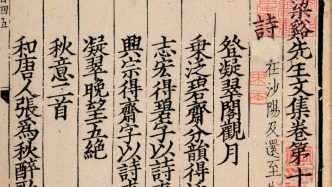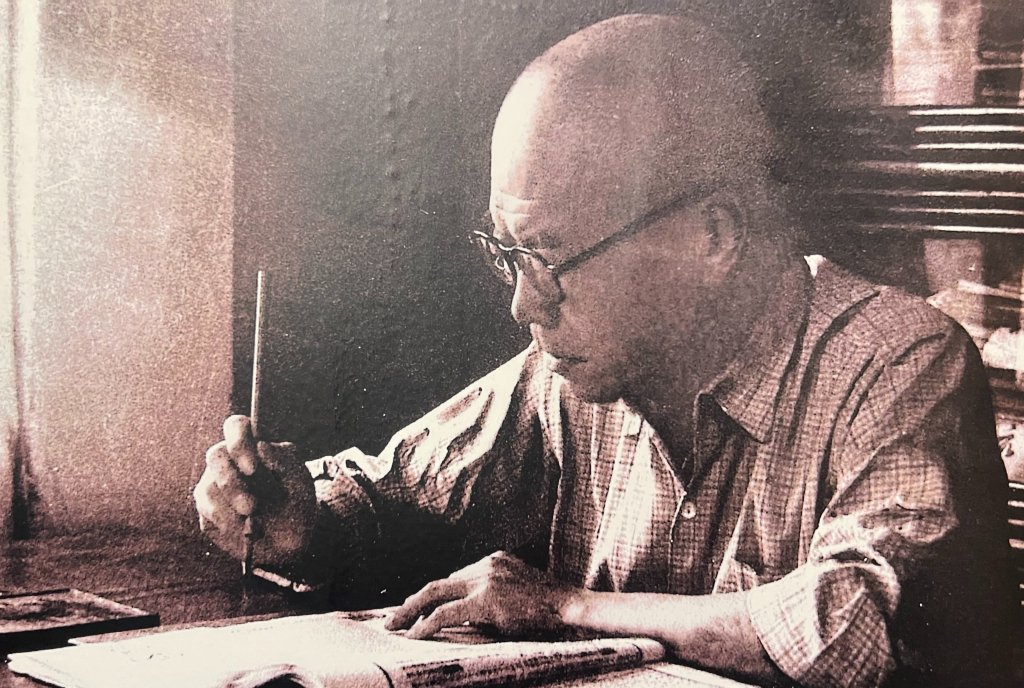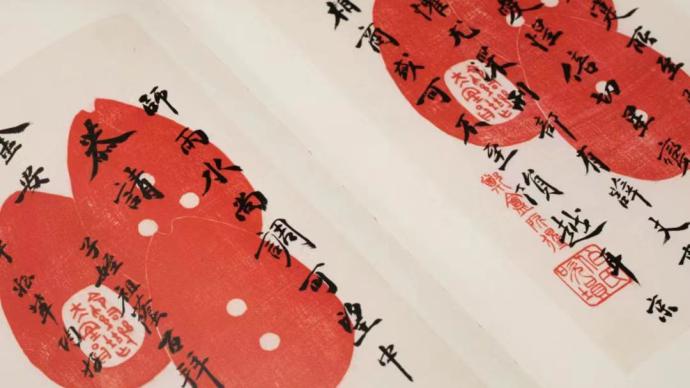
Suzhou "Gui Pan" is a family of officials and eunuchs represented by Pan Shien. Pan Zuyin (1830-1890) was his grandson, and he was keen on collecting gold and stone books. Pan Zuyin once obtained three ancient pottery xuns and customized "Gui Pan's fancy paper". Unexpectedly, a page of "Gui Pan" Huajian actually led to the "rollover" incident of the collector V. Rao is that Pan Zuyin, Wu Yun, Zhao Liewen and others have learned this, and it is inevitable that they will be fooled.
In the old days, literati and scholars often designed their own letterheads, and asked the store to customize them. The letterhead is different from the outside, from the pattern to the craftsmanship, and then prints its own name, which is elegant and elegant, to show its dignity.
Not long ago, I saw Zheng Mingchuan, the person in charge of the watermark of Duoyunxuan's wood board, issued a "Gui Pan's fancy paper" in the circle of friends. There are three ancient xuns on the Huajian, with two sets of characters at the bottom left, one is the straight-running small seal script "Zheng Xu's income", and the other is the four-character Yangwen seal of "Boshi blowing xun". It turned out that this was a letterhead customized by Pan Zuyin, a large family in Suzhou. 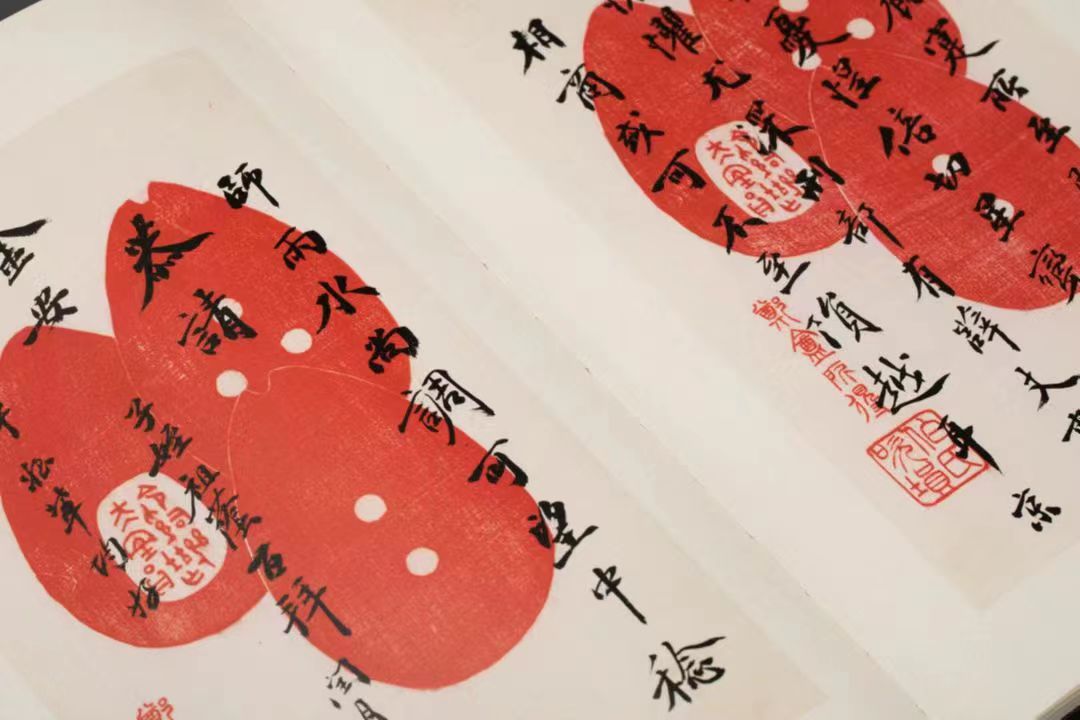
Gui Pan's fancy paper - Pan Zuyin's "Bo's Blowing Xun" flower paper
"Gui Pan" in Suzhou is an aristocratic family represented by Pan Shien. Pan Zuyin (1830-1890) was his grandson. His family has been an official in the court for several generations, and his position is extremely honorable. Pan Zuyin took Wen Heng's palace exams and walked in the South Study Room for nearly 40 years. He has served as the Zuo Shilang of the Ministry of Housing, the Censor of Zuodu of the Duchayuan, the Minister of Industry, the Prince Shaobao, the Minister of Punishment and other positions. He has a high position in the court, and famous officials such as Zuo Zongtang have been supported by him. 
Pan Shien (1769-1854), formerly known as Shifu, courtesy name Huaitang, number Zhixuan, was born in Wuxian, Jiangsu.
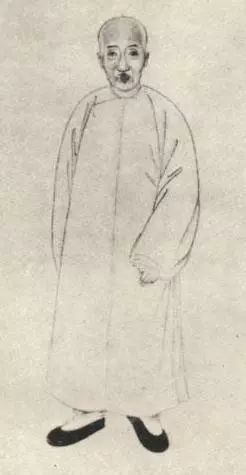
Pan Zuyin (1830-1890), courtesy name Dongyong, alias Chaoyang, alias Boyin, also known as Zheng'an
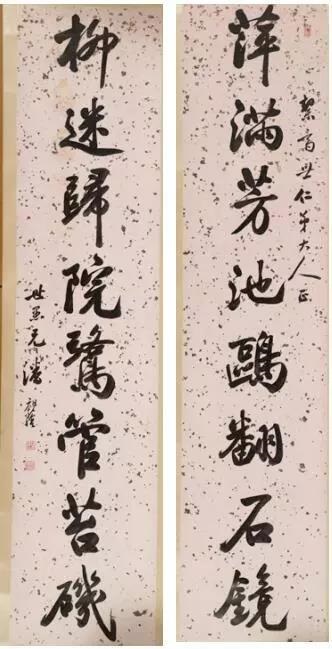
Pan Zuyin's Eight-Character Couplet in Running Script Collection of Suzhou Museum
Pan Zuyin is keen on collecting gold and stone books. When it comes to his collection, he is really rich. Now the treasure of the Shangbo Town Hall is the Dike Ding, and the Big Yu Ding in the National Museum was once his old collection. In addition to official duties, Pan Zuyin is fond of antiquity. He discusses the study of gold and stone with fellow collectors such as Wu Yun, Wu Dazeng, and Shandong Chen Jieqi. Every time he finds a new product, he communicates with each other, and gives each other rubbings. 
The Great Yu Ding in the National Museum of China
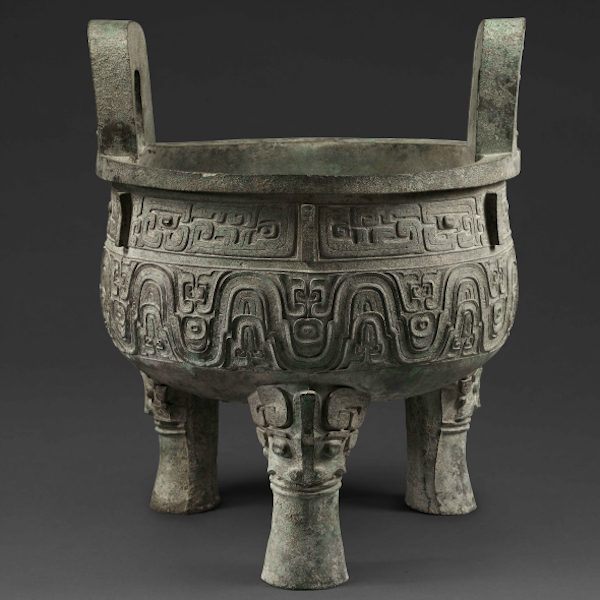
Dakeding Shanghai Museum Collection
Around the beginning of 1881, Pan Zuyin suddenly acquired three ancient pottery xuns. There are seven-character inscriptions on the xuns, one of which is in Yangwen, which is extremely rare.
Xun is a very ancient wind instrument, which is known as the unique creation of the Han nationality in my country. Taoxun, the earliest archaeological discovery at present, was unearthed at the Hemudu site in Zhejiang, about 7,000 years ago, and only one blow hole can be seen. During the Xia and Shang dynasties, the shape of the pottery xun gradually became more regular. In addition to the blow holes, there were also sound holes, and the number of sound holes continued to increase. In the late Shang period, it was basically shaped as an orderly distribution of one blow hole and five tone holes, which could blow out a complete seven-tone scale. Xun has developed from one sound hole to six sound holes, and has experienced a long period of more than 3,000 years. 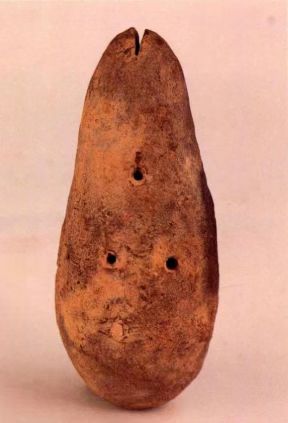
xun
At first, xun was mostly made of stones and bones, and later it was generally developed into pottery. There are also many shapes, such as oblate, oval, spherical, fish-shaped and pear-shaped. Among them, pear-shaped is the most common, and its shape is somewhat similar. Egg. The ancient book "Erya" said: "Xun, burn the soil for it, it is as big as a goose, with a sharp top and a flat bottom, shaped like a scale hammer with six holes, and a small one like a chicken." The big one is like a goose egg, and the small one is like an egg.
In Confucian culture, Xun has been given the role of a moral model because of its soothing and peaceful tone, simplicity and mellow tone. In the Book of Songs, there is a saying, "Boshi blows Xun, Zhongshi blows Chi", which means that two brothers, one blows Xun and the other blows Chi (pronounced: chí) , expresses the brotherhood of harmony and goodwill. Therefore, "Xun sings and Chi is harmonious" has become a concentrated reflection of the Confucian philosophy of "harmony is the most precious" in music. Both musical instruments played an important role in ancient court music.
Pan Zuyin was overjoyed to receive such a rare three-generation ritual and music Taoxun. At that time, there was no mobile phone to take pictures and share with the circle of friends, so he made several rubbings and distributed them to his friends to share his joy of winning.
It just so happened that Wu Yun had the book "Two 绍 Xuan 稍" in hand. Wu Yun (1811-1883) was regarded as his elder, and he was also fond of inscriptions on inscriptions. In 1881, in the sixth month of the lunar calendar, he received a rubbing of ancient Xun from Pan, and was overjoyed. He replied:
There are many kinds of Chenghui, ancient Taoist extension, the most obvious Xun word in the middle, and one kind of yang consciousness , which is especially exquisite. There are more than forty kinds of Zhai Zhai, and it is not easy to see those who want to do so, and the most exquisite and precious ones in Xun Tao’s writing. Has this xun been tested? I see it as the seven characters of "ordering Si Le to make Tai Shi Xun". ... (Wu Yun, "Annotation for Two-Kou Xuan-Chi Slips", p. 344, Shanghai Ancient Books Publishing House, 2020)
Wu Yun couldn't wait to write to Wu Dazeng again:
Zheng Xu was delighted to see the hunter, and he collected hundreds of ancient Taoist characters. Yesterday, it was sent to Youxun, and the seven characters are absolutely exquisite. I am afraid that among the more than 4,000 kinds of Zhai Zhai, it will not be easy to go after. In order to examine and interpret the text, the servants used the seven characters "ordered Si Le to be the Tai Shi Xun". If you have not sent it to the office, you can request it by letter. ... (same book, p. 432)
簠 Zhai (簠 pronounced fǔ, square utensils used to hold rice, millet, sorghum, rice and other meals during sacrifices and feasts in ancient China) is the great collector of Shandong Chen Jieqi (1813-1884), Wu Yun wrote to him:
The rubbings of the Taishixun that Zheng Xu obtained had already been sent, and the ones with Yang knowledge were particularly exquisite. The soil is brittle and thin, and it has been passed down for two or three thousand years. It is something that Zheng Kong and other Confucians have not seen since the Han and Tang dynasties. Once it is prominent in the world, it is urgent to show the drawing style and give it to the people of Zizi as a public art garden. The book has been moved to persuade it. ... (same book, p. 398)
The "Zheng Kong Zhu Confucians" in the letter are Zheng Xuan and Kong Yingda , Zheng Xuan (127-200), the word Kangcheng, who has tasted and commented on the Qunjing, and was a great Confucian in the Han Dynasty.
Kong Yingda (574-648) was a scholar of classics in the early Tang Dynasty and the thirty-two generation grandson of Confucius.
At the beginning of July, Wu Yun participated in the elegant gathering of the Ouyuan Zhen Frank Meeting, and accidentally fell down the steps. Fortunately, he was fine. After more than ten days of recuperation, several wounds gradually healed.
He always thought about these "Tai Shi Xun" of Pan Zuyin, and immediately wrote to Pan again after his spirit improved:
Lizhai and Hengxuan both had books, and they admired Zang Tuxun's essence. Ji Zhai said that Wang Liansheng won one of them, and the deacon won three of them. It can be seen that what I have said in the previous book, although Zangzhai has as many as five thousand kinds, it is also regarded as a subordinate seat, which does not seem to be flattering. In my humble opinion, things that are not strong in Xun native vessels are rare to encounter and spread, and it is urgent to copy their shape and engrave a picture. The so-called eight holes and five holes, as well as the theories of goose eggs and chicken eggs, have this picture, which is sufficient evidence of historical research. Isn’t it a great joy for Mo Lin! What do you think?
Wang Liansheng was Wang Yirong (1845-1900), a native of Shandong, a student of Pan Zuyin. He is also fond of antiquity, and has close contacts with Chen Jieqi (簠zhai). The two families are related by marriage. Chen is the elder, and the two are friends with teachers and friends. They almost talk about everything. In addition, Wang is the discoverer of oracle bone inscriptions in my country.
For such a "great archaeological discovery", Wu Yun tried his best to suggest that Pan Zuyin ask someone to draw and trace it, print it and publish it, so that it can be incarnated and shared by everyone.
With the help of Wu Yun and others, the news of the discovery of "Tai Shi Xun" quickly spread among a group of friends.
Wu Yun also sent a copy of ancient xun rubbings to Changshu collector Zhao Liewen (1832-1894) for appreciation. Zhao Liewen was Zeng Guofan's staff and had always regarded him very highly. He was a well-known bibliophile. Zhao got the rubbings, and on a whim, he wrote a long article "Taishixun Examination", which was full of eloquence and detailed research on this utensil. Wu Yun praised him for his "accurate evidence" and "knowledge from the past", and forwarded the article to Pan Zuyin for appreciation.
Later, Pan Zuyin simply integrated the texts and texts of Zhao Liewen, Li Ciming, Ye Changchi, Yu Quyuan and others into a special book- "Ancient Xun Research and Interpretation" , which was widely circulated, which is equivalent to a current special academic discussion book.
It is estimated that it was Wu Yun and others who coaxed and encouraged Pan Zuyin to be very proud. He also called Boyin, which matched the sentence "Bo's blowing Xun" in the Book of Songs. Therefore, with these "Tai Shi Xun" in his hands, Pan seems to be the spokesperson of the orthodox inheritance of Confucianism, and invisibly has the supreme glory for a scholar in a high position, and even has a symbolic meaning in cultural history.
It should not be long before that, Pan Zuyin customized such a high-profile "Boshi 's Blowing Xun" flower note, and specially copied and printed the Yangwen "Ming Si Le Zuo Tai Shi Xun" , which became a good story in the history of collections. 
Pan Zuyin's "Bo's Blowing Xun" Flower Notes
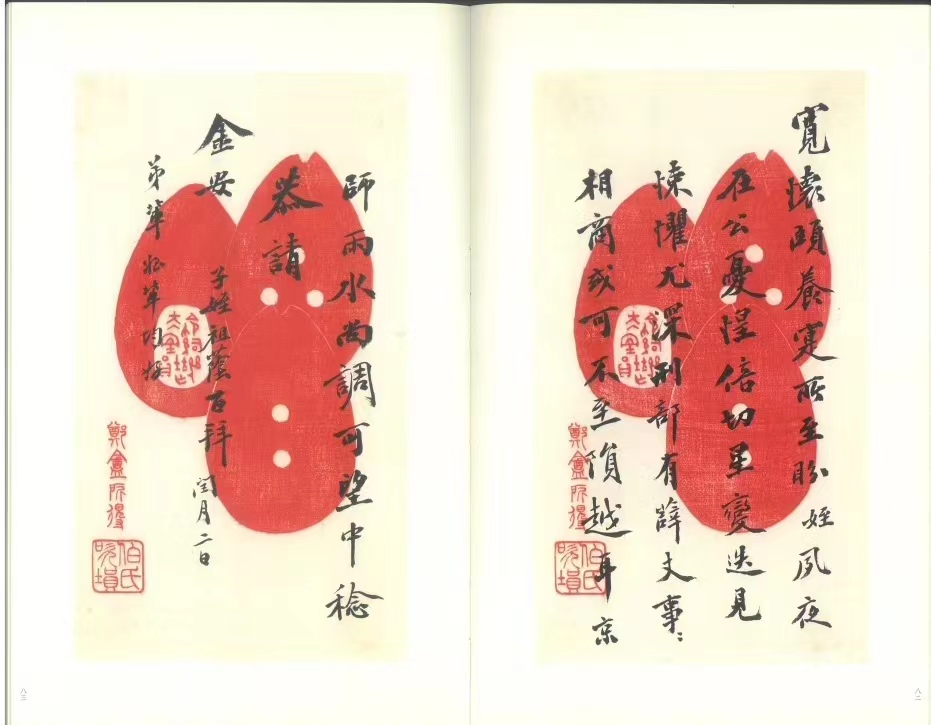
Pan Zuyin's "Bo's Blowing Xun" Flower Notes
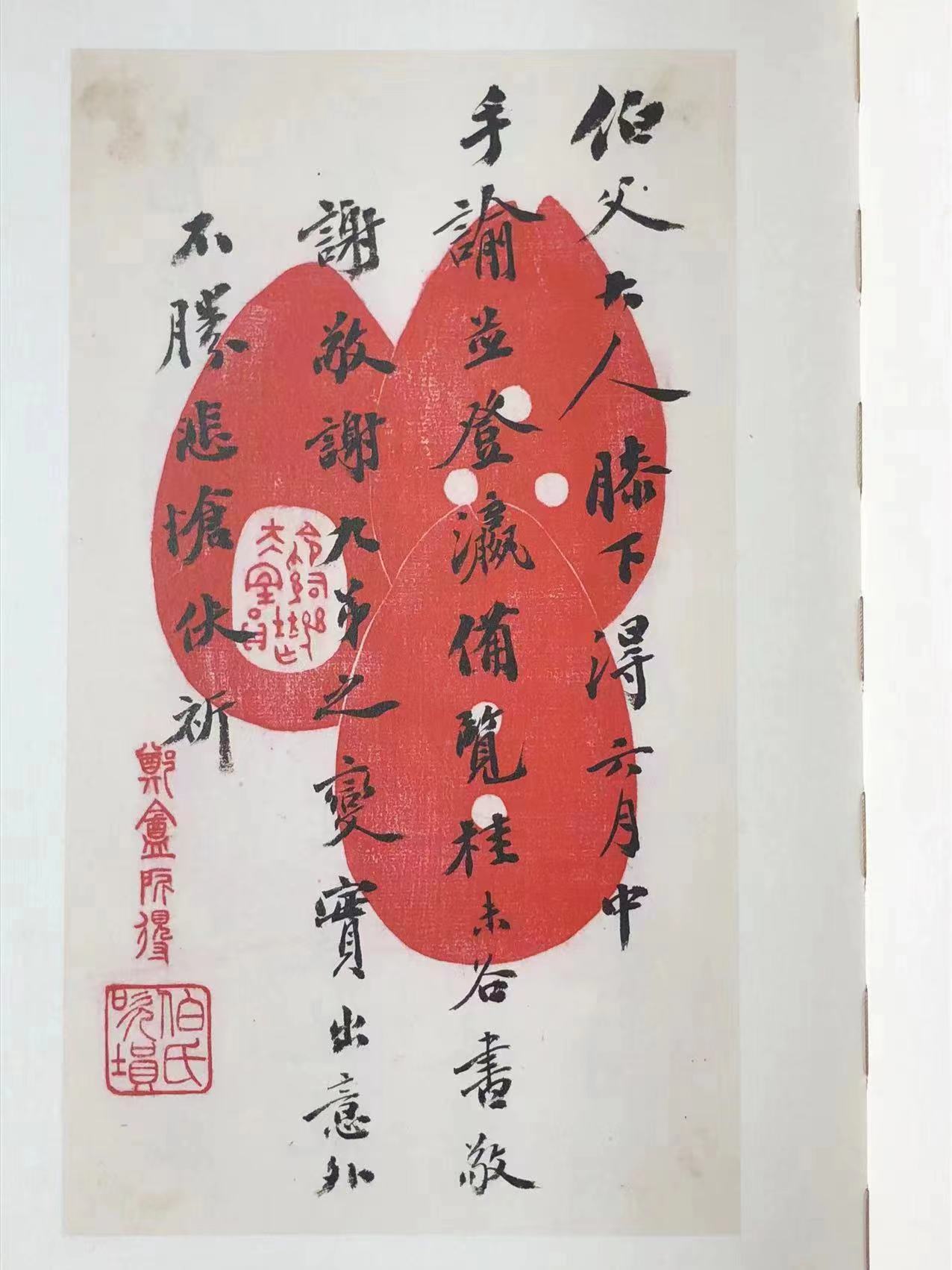
Pan Zuyin's "Bo's Blowing Xun" Flower Notes
Unfortunately, I don't have Pan Zuyin's book at hand, otherwise I should be able to find some direct records from him.
This matter is not over yet.
After more than 120 years, in 2008, some music scholars made a special study on these "Tai Shi Xun".
The study found that eight of these "Tai Shi Xun" with the seven-character inscription "Ming (also interpreted as a decree) Si Le Zuo Tai Shi Xun" have been found in museums across the country, one in Shanghai Bo, one in the Forbidden City, and six more. All the pieces are in the Shandong Provincial Museum, all eight Xun pieces were donated by individuals, and none of them were found in archaeological excavations.
Through actual measurement, it is found that the openings on these Xuns are arranged in a V-shape. The design of the Xun's finger holes is diametrically opposite to the common inverted-shaped arrangement of the Shang and Zhou Xun archaeological discoveries, and it is not as natural as the Shang and Zhou Xun fingering; and this arrangement of Xun holes Violating the principle of musical instrument generation, none of the actual blowing tests can produce sound.
Third, the three characters "tai", "shi" and "xun" in the inscription of "Tai Shi Xun" are all suspicious, especially the seal script of the word "shi" is very strange and strange. "The word, in fact, is equally far-fetched. 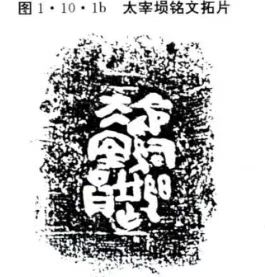
"Tai Shi Xun" and inscription rubbings in the Shanghai Museum
In addition, these "Tai Shi Xun" are all kneaded, and the shape is relatively rough, which is completely different from the Shang and Zhou Xuns, which are mostly round and smooth.
According to these studies, scholars have many doubts about these "Tai Shi Xun", and believe that they are all "suspected to be fake." (See Fang Jianjun's "New Explorations on Taishixun and Shaoxun", Journal of the Central Conservatory of Music, No.3, 2009.)
Later, some literati scholars questioned the official name of "Da Sile" in the ancient pre-Qin book "Zhou Li", thinking that the official name only appeared in the "Zhou Li" book, and did not get other pre-Qin documents or even inscriptions on inscriptions. Waiting for the confirmation of the text, it is hard to cry alone. That is to say, the Zhou Dynasty did not have the official title of "Da Si Le" at all. (Wang Hongjuan, "The Correct Name of the Chief Music Officer of the Zhou Dynasty", originally published in "Literary and Art Review", 2011, 2nd issue.)
Another study revealed that these batches of Tuxun were all provided by Yin Pengshou, a friend of Wang Yirong's hometown (word Ci Jing, No. Maocai), who had the dual identity of a goldstone scholar and an antique dealer. This is even more suspicious.
Based on the above research, it is estimated that this so-called "Tai Shi Xun" was deliberately made by antique dealers for profit, racking their brains, and "directly feeding" these collection Vs who are fond of antiquity. Rao is that Pan Zuyin, Wu Yun, Zhao Liewen and others have learned this, and it is inevitable that they will be fooled.
Originally, this article could have ended here. Unexpectedly, the book "Wang Yirong Returning Books" (Phoenix Publishing House, August 2021), which was ordered casually online, arrived home quickly, and I was even more surprised when I opened it.
It turned out that in the spring of that year, Wang Yirong went back to Shandong and stayed at Chen Jieqi's house for three days, enjoying his latest collections and talking about the past and the present, very happy.
Back in Beijing in March, Wang Yirong wrote a letter to Chen Jieqi, which mentioned: "Zheng Kan (namely Pan Zuyin) gets the three scorpions and each scorpion and completes a number of things, then all the Qi people are deceived , and the people from the south will not return. Well, I can't tell the truth..." (March 29, p. 90) It is estimated that they discussed this device when they met.
After half a month, Wang Yirong wrote a letter to talk about these places :
Lord Shouweng Shifubo:
My nephew left the capital on April 15th, and was on the verge of going. Yin Cijing and Maocai sent another Xun. The text was different from the previous one. It was "Shao" Xun. With Mr. Pan Zhengkan, but complete, the text is the same as this, it seems to have tick marks (see the rubbing, it is known, the tool is real, the same as the nephew, I am afraid or no words, I imitate it , do not need to say, see the rubbing for self-knowledge) , not so refined.
Every time my nephew sees Dongwu going out, his heart will do evil for several days. The three Xuns (with Yangwen) of the Taishi Wen from Qu’s office are fake ones, ranging in size. Rong also got four of these fake ones, and sent them back to Beijing with a smile. (All turned over the sand from a nephew's utensil, and wrote it in Yangwen) Pan Nai was overjoyed, and sent silver and Yin, which belonged to a lot of shopping. This Wuqi musical instrument clearly has the character "Shao" (Pan Shi's "Zhao" character, no, if you say this word, there is nothing in the east), it is a pity that they are all owned by outsiders. Please look for it. From the banks of the Qingzhou River, Yin (who is good at diplomacy) sent Pan Xinyan there are still different texts, I don't know what it is. That is to praise Yi'an. The nephew Yi Rong bowed his head, looking at the sun in April and leaning on his clothes. (same book, pp. 90-91)
The meaning of the two letters is very clear, the so-called "Tai Shi Xun" is false, it is forged from one of his utensils. In the Tuxun with the word "Shao" , the utensils are real, and the characters are imitations, which are added later. These things were forged by Yin Pengshou's side. In addition, Wang Yirong has a strong sense of hometown and strong local protectionism. He seems to be very reluctant to leave the antiquities (eastern objects) in his hometown in Shandong, even his own teachers.
The Shanghai Museum has a "Shao" Xun with the inscription "Ling Zuo Shao Xun" stamped on the lower abdomen. This xun was publicly exhibited at the Suzhou Museum at the end of 2018 at the Suzhou Museum's "Pangu Yishi-Special Exhibition of the Pan's Collection in Suzhou in the Qing Dynasty". It has been determined that this xun can constitute a sign-gong-shang-jiao-qingjiao-zheng Scale structure, clear timbre. 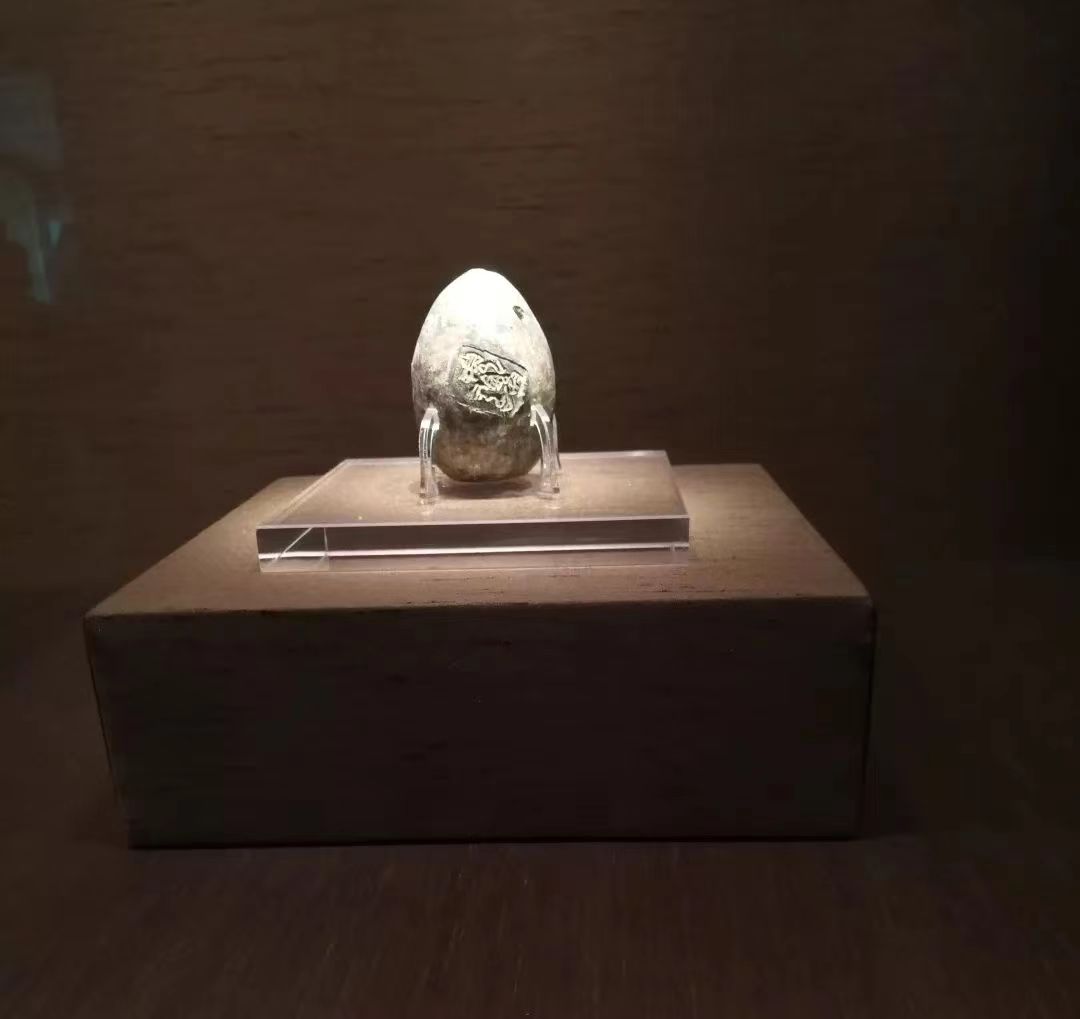
The "Shao" Xun is in the collection of the Shanghai Museum, and the inscription "Ling Zuo Shaoxun" is stamped on the lower abdomen, which was previously collected by Pan Zuyin.
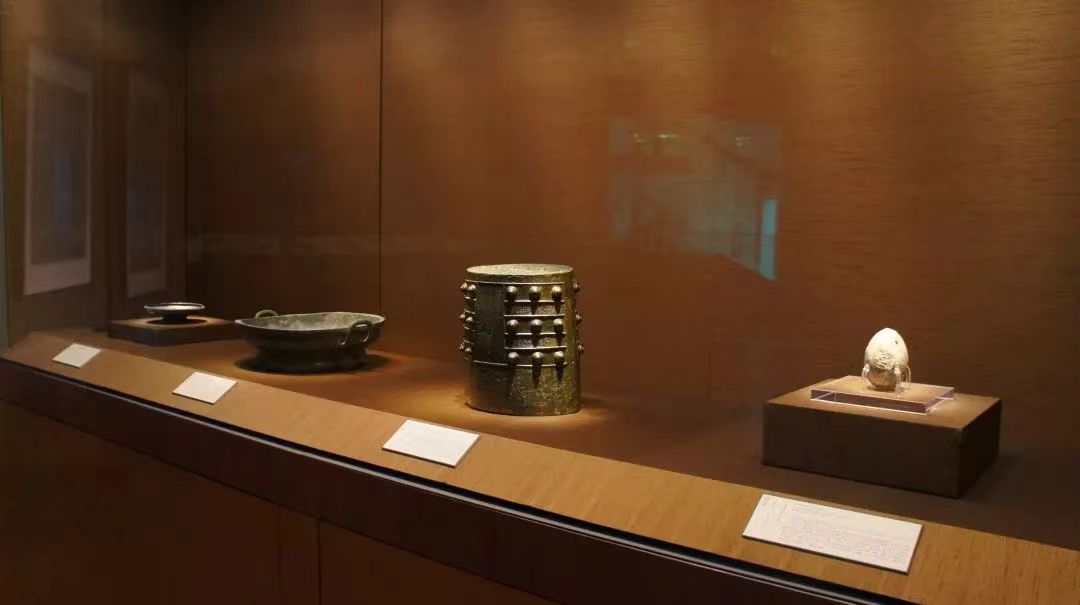
"Shao" Xun in Shanghai Museum
According to Wang Yirong's meaning, the inscription above was added later. "Shao" is the name of ancient music. In "The Analects of Confucius", there was a saying that Confucius was in Qi, heard Shao , and did not know the taste of meat in March. The allusion of antique business is attached to it, catering to the ancients who are deceived.
The poor group of Wu Zhongjinshi were deceived by a Shandong antique dealer. Even today, there are still doctors and postdocs who still study the inscriptions of "Tai Shi Xun" and continue to write long academic articles, which are published in core journals such as "Chinese Culture", which is really a disaster. Falsification of cultural relics is really abominable.
If Pan Zuyin were to know the truth of the matter, the "Gui Pan"'s coffin might not be covered.
August 23, 2022 The first draft of the summer
Revised August 29
(The original title of this article is ""Tai Shi Xun", a collection of "overturning" incidents drawn from a page of "Gui Pan" Huajian".)
